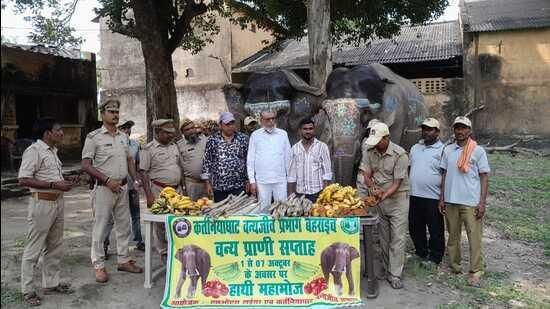UPSC Daily Current Affairs: 17th February 2025 | Current Affairs & Hindu Analysis: Daily, Weekly & Monthly PDF Download
GS2/International Relations
Munich Security Conference 2025 Overview
Source: BBC Why in News?
Why in News?
The recent Munich Security Conference (MSC) highlighted significant tensions between the U.S. and European leaders, particularly in response to U.S. Vice President J.D. Vance's controversial remarks regarding Europe's approach to hate speech and the far-right political movements.
- The MSC has become a platform for global leaders to discuss pressing international security issues.
- There is a growing concern over the reliability of U.S. military support for European nations under NATO.
- The U.S. has initiated talks with Russia regarding the Ukraine conflict, raising alarms among European allies.
- European nations are expected to increase their defense spending in response to escalating threats from Russia.
- Economic tensions between the U.S. and Europe have escalated over trade disputes, particularly concerning tariffs.
Additional Details
- Munich Security Conference (MSC): An annual forum established in 1963 that originally focused on military issues during the Cold War, now encompassing broader topics like climate change and migration.
- U.S.-Russia Talks on Ukraine: Diplomatic negotiations have begun without the participation of Ukraine, leading to fears about its sovereignty and future security.
- Increased Defense Expenditure: European NATO members are expected to raise their defense spending from a minimum of 2% of GDP to 3% in light of Russia's military aggressiveness.
- Economic Tensions: President Trump's recent decision to impose a 25% tariff on steel and aluminum imports from Europe has further strained economic relations.
The Munich Security Conference serves as a critical venue for addressing the evolving dynamics of international relations, particularly the shifting security landscape in Europe and the implications of U.S. policy decisions. These developments underscore the necessity for European nations to reassess their defense strategies and economic ties with the United States.
GS2/Polity
When can President’s Rule be imposed?
Source: The Hindu
 Why in News?
Why in News?
President’s Rule was imposed in Manipur on February 13 following the resignation of CM N. Biren Singh amid ethnic violence and the inability of the BJP to find a consensus CM candidate.
- President’s Rule is a mechanism for direct governance by the central government when a state government fails to function effectively.
- It can be invoked under specific constitutional provisions such as Articles 356 and 365 of the Indian Constitution.
- Instances of President's Rule have become less frequent due to increased judicial scrutiny and political accountability.
Additional Details
- What is the President’s Rule: This is the suspension of a state government, allowing direct rule by the central government when constitutional machinery fails.
- Constitutional Provisions:
- Article 356: Allows the President to declare President's Rule if the state government cannot function according to the Constitution.
- Article 365: Enables the President to act if a state fails to comply with directions from the Union government.
- Historical Instances:
- First Instance (1951): Imposition in Punjab due to government collapse.
- Political Crisis (1967): Multiple states faced instability post-Fourth General Elections.
- Post-Indira Gandhi's Assassination (1984): President’s Rule was invoked in Punjab amidst riots.
- Post-Babri Masjid Demolition (1992): Imposition in several states with BJP-led governments.
- Controversial Cases (2016): Uttarakhand and Arunachal Pradesh faced President’s Rule, later revoked by the Supreme Court.
- Judicial Review: The S.R. Bommai vs Union of India case (1994) allowed courts to review and potentially strike down unconstitutional impositions of President's Rule.
- Legislative Suspension: Keeping a legislature in suspended animation means the assembly is inactive but not dissolved, allowing for potential revival if stability returns.
In conclusion, while President's Rule serves as a critical tool for managing governance failures in states, its invocation has become less common due to judicial oversight and the demand for political accountability. Strengthening federal governance and encouraging political stability are essential moving forward.
GS3/Science and Technology
Overview of Russia's mRNA Cancer Vaccine
Source: The Hindu
Why in News?
In December 2024, Russia announced the development of a new mRNA-based personalized cancer vaccine, with plans to make it available for free to patients by early 2025.
- The vaccine is based on mRNA technology similar to that used in COVID-19 vaccines.
- It aims to provide personalized treatment for cancer patients rather than preventing the disease.
Additional Details
- What is mRNA (Messenger RNA): mRNA is a type of RNA that transports genetic information from DNA to ribosomes, guiding the production of proteins. It provides the exact sequence of amino acids necessary for protein synthesis and does not remain in the cell permanently; it is degraded after use.
- How mRNA Cancer Vaccines Work: These vaccines train the immune system to detect and attack cancer cells by providing genetic instructions. They are customized for each patient, targeting specific tumor antigens, thus making them highly personalized and potentially more effective.
- The vaccines are therapeutic, meaning they are designed for patients who already have cancer, contrasting with traditional vaccines that aim to prevent illness.
- Immunotherapy enhances the body’s ability to detect and destroy cancerous cells, selectively targeting only cancer cells and reducing harmful side effects associated with chemotherapy.
In summary, the mRNA cancer vaccine represents a significant advancement in cancer treatment, leveraging existing mRNA technology to offer personalized therapies aimed at enhancing patient outcomes.
GS3/Science and Technology
Measles: A Resurgence of a Contagious Virus
Source: New York Times
 Why in News?
Why in News?
Measles, a highly contagious viral infection, is experiencing a resurgence in the United States, particularly in states like Texas. This increase is attributed to declining vaccination rates and international travel, highlighting the need for awareness and preventive measures.
- Measles is a serious airborne disease caused by a virus from the paramyxovirus family.
- The virus spreads through direct contact and respiratory droplets, primarily affecting the respiratory tract.
- Symptoms generally appear 10 to 14 days post-exposure and can lead to severe complications.
Additional Details
- Symptoms:Initial symptoms include:
- High fever lasting four to seven days.
- Runny nose, cough, and red, watery eyes.
- Small white spots inside the cheeks (Koplik spots).
- A characteristic rash typically starts on the face and neck, spreading to the hands and feet over three days, lasting five to six days.
- Who is at risk? Non-immune individuals, particularly unvaccinated children and pregnant women, are at the highest risk for severe complications.
- Treatment: No specific antiviral treatment is available for measles; supportive care is crucial.
Raising awareness about measles and promoting vaccination is essential to preventing outbreaks and protecting public health.
GS3/Economy
Weak Demand for Sovereign Green Bonds
Source: Indian Express
 Why in News?
Why in News?
India has initiated the issuance of sovereign green bonds to finance its transition towards a low-carbon economy. However, the demand from investors has been limited. Despite the potential these bonds have for raising capital for clean energy initiatives, they have not been able to secure a notable greenium (the lower borrowing costs typically associated with green bonds). This has resulted in funding cuts for essential projects, such as grid-scale solar energy initiatives.
- India's sovereign green bonds (SGrBs) are designed to fund environmentally friendly projects.
- Investor interest in these bonds has been weak, leading to reliance on general revenue for funding gaps.
- Improvements in liquidity, reporting transparency, and the introduction of sustainability bonds may enhance demand.
Additional Details
- Sovereign Green Bonds (SGrBs): These bonds are issued by government entities, such as the Government of India, to finance projects that promote energy efficiency, reduce carbon emissions, and enhance climate resilience.
- Funds Raised:Since 2022-23, India has issued SGrBs eight times, generating nearly Rs 53,000 crore. Key allocations include:
- Electric Locomotive Manufacturing – Rs 12,600 crore
- Metro Projects – Rs 8,000 crore
- Renewable Energy Projects – Rs 4,607 crore
- Afforestation – Rs 124 crore
- Challenges in Demand: Despite easing regulations for foreign investors, participation has been low, with many bonds unsold and primary dealers absorbing them.
- Limited Greenium: Globally, greeniums average 7-8 basis points, while in India, they are only 2-3 basis points, making them less attractive to investors.
- Liquidity Constraints: Small issuance sizes and investors holding bonds until maturity have hindered market trading, reducing appeal.
- Lack of Investment Ecosystem: India lacks a robust network of social impact funds, diminishing demand for SGrBs.
The challenges faced by India's SGrBs underline the urgent need to stimulate investor demand to ensure the sustainability of green initiatives. Exploring options like sustainability bonds, improving post-issuance reporting, and leveraging multilateral partnerships could enhance investor confidence and funding availability.
GS3/Economy
Transforming India's Fruits & Vegetables Sector - Lessons from Dairy Success
Source: Indian Express
Why in News?
The fruits and vegetables (F&V) sector in India is growing at a rapid pace, outpacing the cereals sector and contributing nearly 30% to crop agriculture. However, the sector requires a significant transformation, akin to the success seen in the milk sector.
- The F&V sector faces several challenges, including inadequate policy support and poor infrastructure.
- Post-harvest losses in F&V amount to Rs 1.53 trillion annually.
- Farmer Producer Organisations (FPOs) can play a crucial role in stabilizing prices and mitigating losses.
- Sahyadri Farmer Producer Company Ltd (SFPCL) serves as a successful case study for FPOs in the F&V sector.
- Government initiatives and a centralized body are essential for the growth of the F&V sector.
Additional Details
- Issues Faced by the F&V Sector:The sector receives less policy support compared to cereals, leading to challenges such as:
- Lack of organized value chains and storage.
- Seasonal price fluctuations and gluts.
- Farmers receiving only about 30% of the consumer price.
- Success of the Milk Sector: Under the leadership of Verghese Kurien, India transitioned from a milk-deficient country to the world's largest producer.
- Role of Farmer Producer Organisations (FPOs): FPOs can integrate farmers into structured value chains to address price volatility and post-harvest losses.
- Case Study - Sahyadri Farmer Producer Company Ltd (SFPCL): Established in 2004, it grew from 10 farmers to 26,500, achieving significant revenue increases and employment generation.
- Government Initiatives: The government has registered 8,875 FPOs under a central scheme aimed at promoting FPOs, but there is a need for more visionary leadership and accountability.
In conclusion, transforming the F&V sector in India can significantly boost farmer incomes, reduce post-harvest losses, and stabilize prices. With the right policy support, infrastructure, and leadership, India has the potential to become a global leader in horticulture.
GS3/Environment
The Silent Crisis of Rat-Hole Mining
Source: The Hindu
Why in News?
The issue of illegal mining in Assam and Meghalaya has become a pressing concern, marked by severe consequences for both the environment and human lives. A recent incident in Umrangso, Assam, where nine miners lost their lives after being trapped in a flooded rat-hole mine, underscores this ongoing crisis.
- Illegal mining persists despite legal bans and numerous accidents.
- Weak enforcement of laws, political and economic interests contribute to the problem.
- Rat-hole mining poses significant risks to miners and leads to severe environmental degradation.
Additional Details
- Historical Context: The roots of illegal coal mining in this region date back to the 1980s, spurred by industrial demand from West Bengal and Bangladesh. Rat-hole mining became prevalent due to the challenging terrain, leading to dangerous extraction methods.
- Forms of Rat-Hole Mining: The two main techniques are side-cutting along hills and box-cutting, where pits can reach depths of up to 400 feet.
- Influence of Coal Mafias: Despite a ban by the National Green Tribunal in 2014, illegal mining continues due to the power of coal mafias and corrupt practices involving local bureaucrats. Vulnerable migrant laborers and even children are often exploited for labor in these hazardous conditions.
- Legal Challenges: The Meghalaya government’s attempts to evade national mining laws highlight the enforcement failures. The MMDR Act mandates prevention of illegal mining, but actual enforcement remains weak.
- Environmental Impact: Illegal mining has caused significant environmental harm, including deforestation, water contamination, and soil erosion. The existence of around 26,000 abandoned mine openings poses ongoing risks.
To address the crisis, a multi-faceted approach is needed, including stricter enforcement of laws, promotion of alternative livelihoods, technological advancements for monitoring illegal activities, and community involvement in governance. The recent attention from the Gauhati High Court presents an opportunity for reform, but sustained efforts are crucial to ensure compliance with legal frameworks and protect the rights of affected communities.
GS3/Environment
Loggerhead Turtle
Source: The Hindu
 Why in News?
Why in News?
A recent study has highlighted the remarkable learning capabilities of the loggerhead turtle, particularly its ability to remember the magnetic signature of specific areas. This ability is demonstrated through a unique behavior known as the 'turtle dance' when the turtles find themselves in locations associated with food.
- The loggerhead turtle is a species of oceanic turtle belonging to the family Cheloniidae.
- It is recognized for its large head which supports powerful jaw muscles.
- This species is the world's largest hard-shelled turtle, slightly larger than the Green sea turtle and the Galapagos tortoise.
- Loggerhead turtles are the second largest extant turtles, following the leatherback sea turtle.
- These turtles utilize the geomagnetic field as a navigational tool over long distances.
Additional Details
- Distribution: Loggerhead turtles have a cosmopolitan distribution, nesting across the widest geographical range of any sea turtle. They inhabit the Atlantic, Indian, and Pacific Oceans, as well as the Mediterranean Sea.
- Diet: Loggerhead turtles are omnivorous, primarily feeding on bottom-dwelling invertebrates, including gastropods, bivalves, and decapods, and have the most extensive known diet of any sea turtle.
- Conservation Status: According to the IUCN, loggerhead turtles are classified as Vulnerable.
- Threats: The species faces several threats, including bycatch in fishing gear, climate change, direct harvesting of turtles and their eggs, loss and degradation of nesting habitats, and ocean pollution/marine debris.
This information underscores the importance of conservation efforts for loggerhead turtles, as their survival is threatened by various human activities and environmental changes.
GS3/Science and Technology
DISTRIBUTED DENIAL OF SERVICE (DDoS) ATTACK
Source: The Hindu
Why in News?
In January, the Kaveri 2.0 web portal, designed to facilitate property registrations in Karnataka, experienced significant server outages. Investigations by the Revenue and E-Governance Departments revealed that these disruptions were caused by a Distributed Denial of Service (DDoS) attack.
- A DDoS attack is a malicious effort to disrupt the normal operations of a targeted server, service, or network by inundating it with excessive internet traffic.
- In contrast to a Denial of Service (DoS) attack, which originates from a single source, a DDoS attack utilizes numerous compromised systems, often infected with malware, to generate the traffic. These systems form a collective known as a botnet.
- DDoS attacks aim to overwhelm network bandwidth, exploit vulnerabilities in the network protocol stack, or target specific weaknesses in applications or services.
- While DDoS attacks do not directly steal data, they can serve as a diversion during other cyberattacks, such as data breaches.
- The Kaveri 2.0 portal, essential for property registrations, faced performance challenges due to the creation of fake accounts that overwhelmed the system.
- This attack involved 62 email accounts from 14 different IP addresses, underscoring its distributed nature.
Additional Details
- Mitigation Strategies: Organizations can adopt advanced traffic filtering mechanisms to differentiate between legitimate and malicious traffic.
- Monitoring tools can be implemented to detect unusual traffic patterns, enabling proactive responses.
- Enforcement of rate limiting can restrict the number of requests a user can make in a specified time frame, helping to prevent system overload.
- Bot detection technologies, including CAPTCHA challenges and behavioral analysis, can identify and block automated tools or bots.
- Robust authentication mechanisms and regular security audits can enhance the integrity of online services and block unauthorized access.
In summary, DDoS attacks pose significant threats to online services by disrupting availability, and organizations must implement robust security measures to mitigate these risks effectively.
GS3/Environment
Katarniaghat Wildlife Sanctuary (KWS)
Source: Hindustan Times
 Why in News?
Why in News?
Recently, the carcass of a male elephant, estimated to be between 45 to 50 years old, was discovered in the dense forests of the Katarniaghat Wildlife Sanctuary (KWS), located near the Indo-Nepal border.
- KWS is a protected area situated in the Upper Gangetic plain of Uttar Pradesh.
- Established as part of 'Project Tiger' in 1987, it forms the Dudhwa Tiger Reserve alongside Kishanpur Wildlife Sanctuary and Dudhwa National Park.
- The sanctuary spans a total area of 400.09 sq. km.
- KWS serves as a crucial ecological corridor linking tiger habitats in India with Bardia National Park in Nepal.
Additional Details
- Vegetation: KWS features a fragile Terai ecosystem characterized by a diverse range of habitats, including sal and teak forests, lush grasslands, and various wetlands and swamps.
- Flora: The predominant vegetation is Sal Forest, which includes various associated species such as Terminalia alata (Asna), Lagerstroemia parviflora (Asidha), Adina cordifolia (Haldu), Mitragyna parviflora (Faldu), and Gmelina arborea (Gahmhar).
- Fauna: KWS is home to numerous endangered species, including the Gharial, tiger, rhinoceros, swamp deer, hispid hare, Bengal florican, and both white-backed and long-billed vultures.
- The Girwa River, which flows through KWS, has been designated a sanctuary for Mugger and Gharial, and supports a rich diversity of aquatic life, including rare turtles and freshwater fish.
- KWS is one of the few locations in India where freshwater dolphins, also known as Gangetic dolphins, can be found in their natural environment.
The discovery of the elephant carcass highlights the ongoing concerns regarding wildlife conservation and the ecological health of the Katarniaghat Wildlife Sanctuary.
|
44 videos|5271 docs|1113 tests
|





















